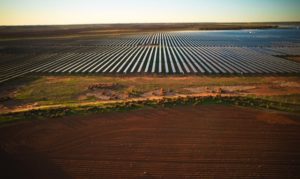An acoustic engineering group has rejected claims that the frequencies created by wind turbines can have adverse health issues, saying the infrasound generated is often less than a person’s heart-beat.
Findings by the Association of Australian Acoustical Consultants (AAAC) stated that the current levels of infrasound emitted by wind turbines created are in line with natural levels.
According to the AAAC, infrasound levels, frequencies below 20Hz, are already in abundance in our natural environment from sources such as wind, waves and earthquakes. People also generate infrasound through breathing and heartbeats.
Mechanical sources of infrasound originate from sources like aircrafts, traffic, and fossil fuel generation …. and wind turbines. Infrasound emissions from wind turbines have previously been though to cause adverse health effects such as breathing problems, digestive issues, headaches and nausea.
However, the AAAC concluded that infrasound levels around wind farms are no higher than the levels around where people live, work and sleep.
“Those investigations conclude that infrasound levels adjacent to wind farms are below the threshold of perception and below currently accepted limits set for infrasound,” it said.
It said noise level from wind turbines was a function of wind speed. But as the wind speed increases, noise from wind passing through vegetation, for instance, also increases. This could mask the noise from wind turbines.
The release of the report comes as the incoming conservative government proposes a range of new rules for wind farms, including “live monitoring”, something the wind industry say is expensive and all but impossible because of the background noise.
AAAC chairman Martti Warpenius told the ABC that the group wants to clear up any confusion over the health impact of wind farms.
“Our environment has lots of infrasound already in it, the levels generated by wind farms from our point of view are quite low in comparison and they’re no higher than what is already out there in the natural environment,” he said.
“People themselves generate infrasound through things like their own heartbeat, through breathing and these levels of infrasound can be substantially higher than an external noise source.”
The report said that although infrasound was deemed normal it was found that amplitude modulation, the variation in emitted noise level, was higher than usual for brief periods at a small number of test sites.
The AAAC also mentioned that some wind turbines produce tones that are audible for humans and although they may be irritating, do not pose any health risk.
Among the AAAC’s membership is Les Huson, who works with several anti wind groups. Vocal anti-wind activist Steven Cooper is a member of the Australian Acoustical Society (and not the AAAC as we reported before).










